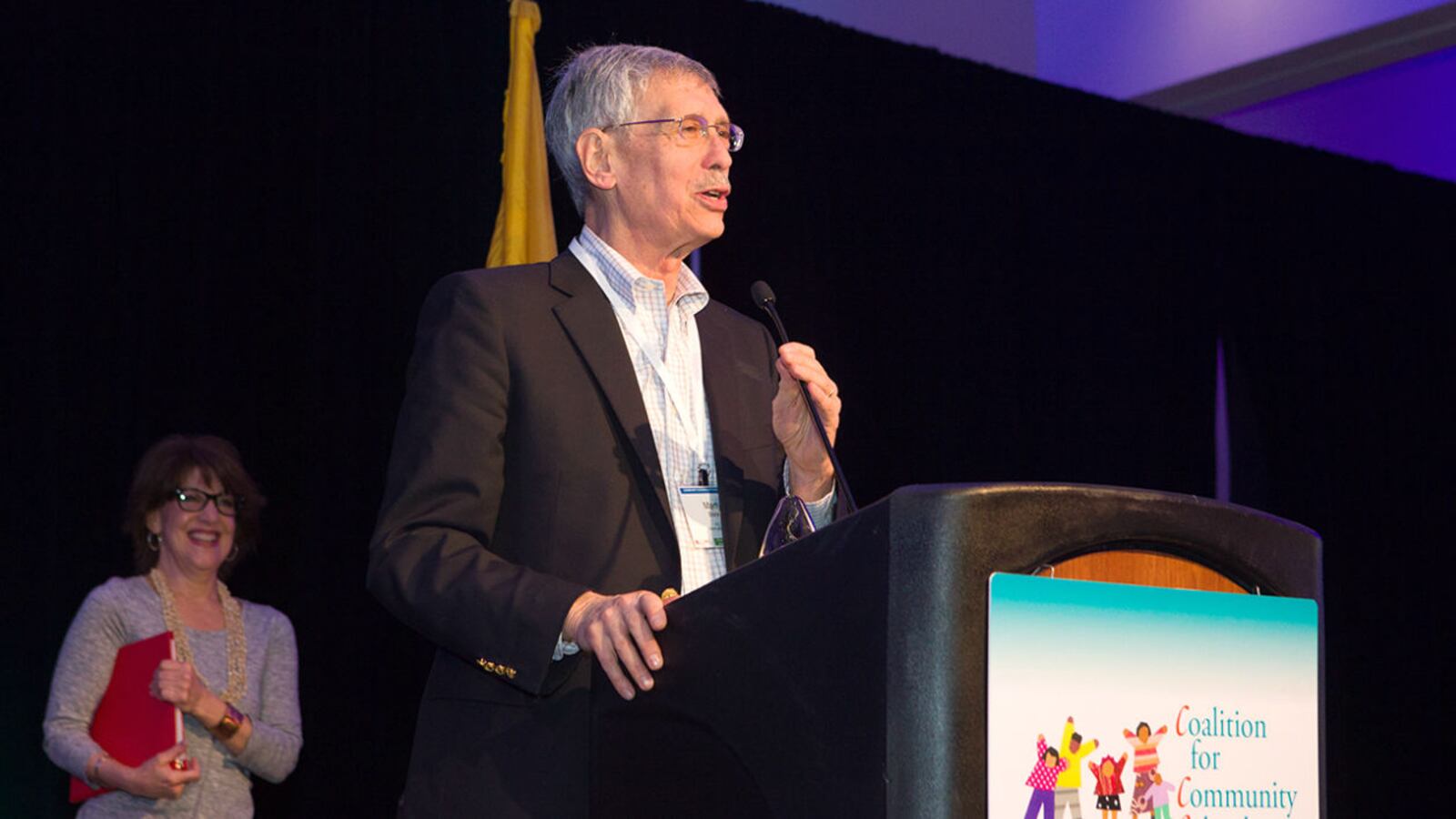When New York City does things, it does them big.
That certainly applies to Mayor Bill de Blasio’s “community schools” initiative. The city’s effort to boost attendance and achievement at struggling schools by flooding them with social services included 130 schools and nearly 56,000 students this year.
A similar plan is about to take off statewide, landing New York in the center of a national conversation about community schools.
Martin Blank, who directs the national Coalition for Community Schools, has been tracking that conversation for years. He advises districts looking to adopt the approach and responds to critics who question whether the costly interventions — including pairing schools with nonprofit partners — are enough to revamp troubled schools.
Chalkbeat recently spoke with Blank about the massive effort underway in New York and how that’s shaping the national debate about how poverty impacts learning — and what schools can do about it.
Chalkbeat: It seems like there’s new interest in community schools lately. Do you feel like we’re at a moment where this movement is at the center of attention?
Blank: It’s growing into the center of attention. It’s hard for me to assess that fully at this point. But many people think the new [federal education] law — which devolves authority to the states and locals, and expects there to be more consultation at the state and local level for what cities and districts are going to do — opens the door to the vision for community schools.
How is the movement measuring what kind of impact community schools are having?
We see impact on attendance. We see impact on family engagement. We see impact on student achievement in some places. We see impact on graduation rates.
We have to measure what people give us. It’s not easy to capture all the data. But in New York, people are focused on chronic absence. There’s a real focus on authentic family engagement. People I know in various places are worried about asthma as it affects kids’ health. So we’re trying to capture data along those lines.
We’re driving our field to talk more about the results they want, not just the services they can provide.
Has the large rollout of community schools in New York City, and the new funding for such schools in the state budget, influenced the national conversation about community schools?
It does absolutely change the equation. And I think Mayor de Blasio influenced what [Philadelphia] Mayor [Jim] Kenney is doing, what [Mayor] Ras Baraka is going to do in Newark. So we have a rising tide.
We’re working on voluntary standards. As you’ve gleaned from the work in New York, there’s a tension between wanting to say exactly what [a community school] should look like and giving people a voice in creating community schools.
We know what the key ingredients are, and New York has followed a lot of that: community school coordinators, school site planning teams, trying to get principals on board. That didn’t happen as perfectly as everyone would have liked with the ‘Renewal’ schools.
I always say to people, you want to pick the [schools] who stand up and say, I want to do this. But that’s the reality we face in trying to move a reform agenda. It’s not perfect. But I think they’ve done some of the structural things. They picked some priorities around after school and mental-health issues. But they’ve also been very attentive to real, authentic family engagement.
Does it concern you at all for this to be used as a turnaround strategy?
Of course. Because we’re in a moment when everyone thinks this work is urgent. And it is urgent. But … I was a Vista volunteer in the “boot heel” of Missouri in 1965. It was urgent, and it has been urgent for a long time. That doesn’t mean that things should be slow, but we’ve got to build sustainable vehicles for change. And we think the community school represents that.
So yeah, I’m worried that three years from now, five years from now, we won’t see as much. But if we see parents standing up and educators standing up — and we can see movement in the right direction — then I think we have a story to tell.
But you have some community schools in New York City and elsewhere that have been doing this model for a long time, and still their academics are not great.
That’s a fair critique. What I think is happening now with the involvement of the teachers union, people are realizing that there’s not [academics] and the community school, there’s a whole thing. We’re seeing more alignment, more co-generation of ideas and strategy. And I think we’ll see more improvement in the future.

